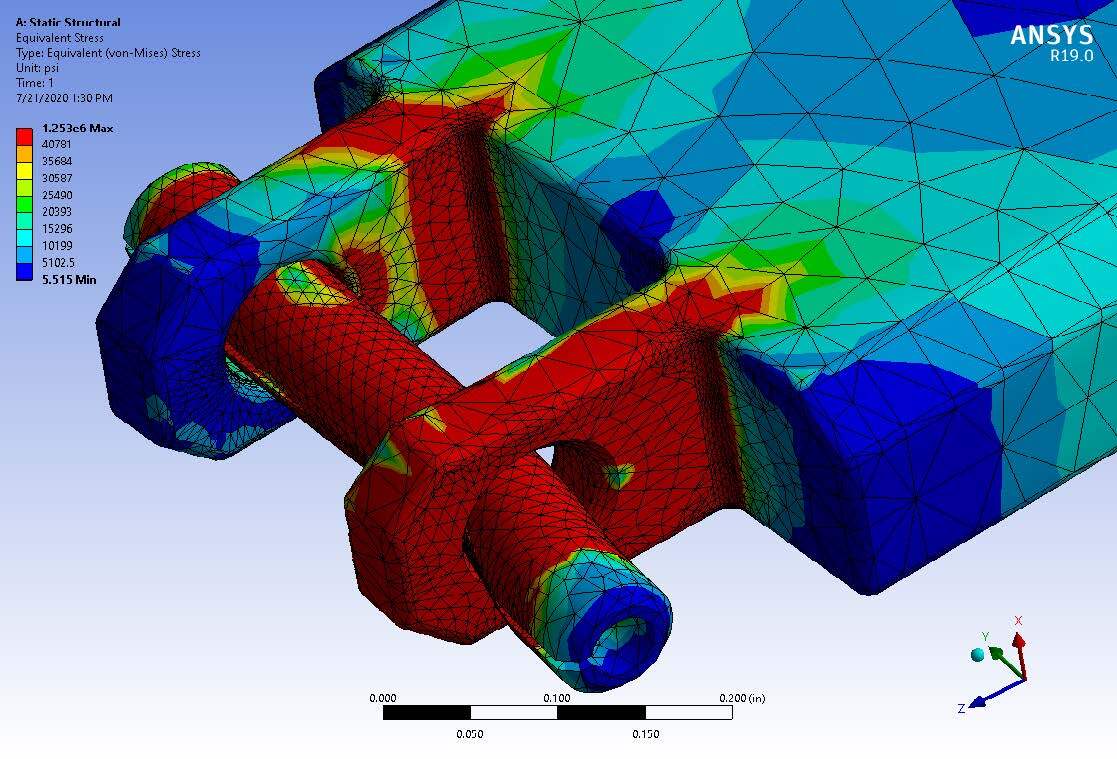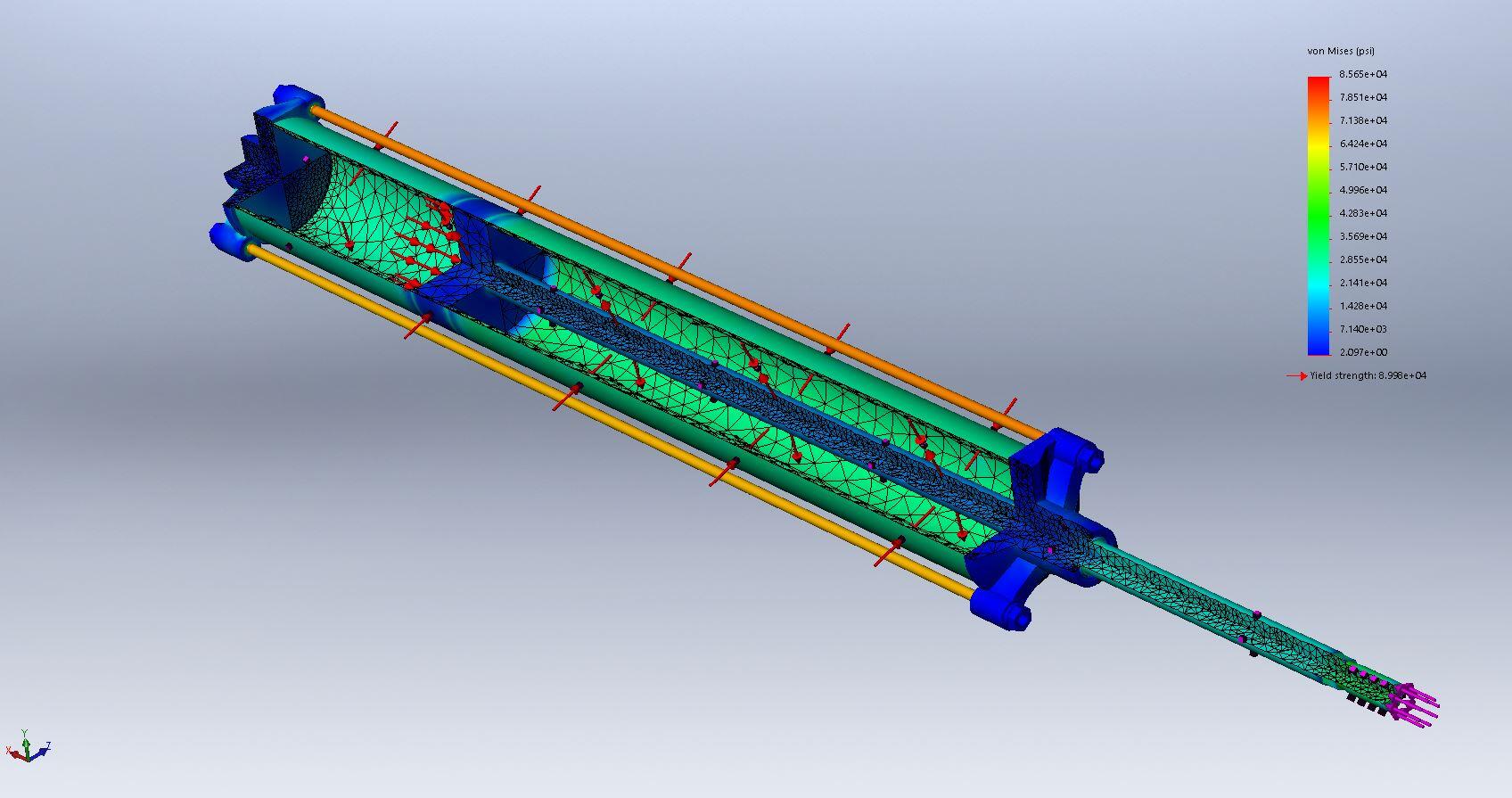Every business or industry desires a product of immaculate standards. A better quality drives customers, ensures safety, and offers a great life cycle. In the Mechanical, Aerospace, and Civil industries, a component’s standard plays a crucial role in its functional abilities. With the drastic augmentation in need of a high-quality product. Industries and engineers have increased their dependency on FEA (Finite Element Analysis).
What is Finite Element Analysis?
FEA or Finite Element Analysis is an engineering solution employed by engineers to design a product as per its functional needs. FEA helps engineers reduce the number of prototypes and optimize the design. While, expedites the product’s development process to save resources. FEA is incorporated in mechanical, Aerospace, civil industries. To identify the weak spots in the designed component or structure and improvise the existing design. Because of its efficiency in addressing the structural, thermal, and fluid flow related problems. FEA has found its place in numerous other fields as well.
Any physical phenomena can be simulated using Finite Element Analysis. FEA is based on the numerical technique called Finite Element Method or FEM. FEA has revolutionized the designing of a component or assembly. With its arrival, engineers and designers can perform simulation of a component. To replicate its behavior under its intended functional circumstances.
Applications of FEA:
Experts have begun to realize the true potential of Finite Element Analysis. Its current wide applications in the Mechanical and Aerospace industries. FEA is expected to solve problems that involve two or more physical constraints. Such as Fluid-Structural interaction, thermal-mechanical, thermal-chemical, and many more in other relevant areas.
Many industries and sectors are dependent on FEA. To ensure that the stress value remains under the breaking stress when a component is under operation. Besides analyzing the stresses. The FEA tool is also competent in evaluating the air or fluid flow around an object. Thus giving engineers the ability to analyze the drag and lift force from velocity and pressure distributions. Aiding them to optimize the design for smooth, uninterrupted airflow.
FEA deals with two types of problems:
1) Static:
With this type of analysis, static linear or nonlinear structures can be analyzed. Under constant constraints conditions to determine the reactions or structural deformations. For instance- a beam under a constant load of 100N can be an example of this type of model.
2) Dynamic:
A component or assembly under a Varying load or constraint condition. It can be an example of Dynamic analysis. Fluid flow or thermal stress analysis also comes under the Dynamic model.
As said, “With Great Power comes Great Responsibility.”
Although FEA has greatly simplified the process of optimizing designs to save resources and ensure reliability. At the same time, FEA softwares can be incomprehensible for regular users. For that purpose engineers and experts are the ones who can extract the full potential of the FEA software. But how does FEA work? To address this, let’s jump-on to the next section.
How does FEA work?
Multitudinous Intriguing but complex phenomenon takes place around us, especially in the engineering world. Understanding ‘What is Finite Element Analysis?’ can be easily comprehensible. But learning ‘How does FEA works?’, can be overwhelming for most. FEA’s dependency relies majorly on advanced mathematics to find a solution, and it extensively applies FEM (Finite Element Method). This engineering miracle employs innumerable partial differential equations to solve the problem relating to:
1) Fluid Flow around or within an object
2) Heat Transfer
3) Structural Analysis
4) Electromagnetic Potential
And many other physical real-life problems. When a component is assessed using FEA. It is broken down into smaller infinite chunks. Depicting the structure that is being analyzed. Every chunk of the element is then subjected to the conditions specified by the engineer. Thus, replicating the actual environment of its function. The finer the chunks, the more accurate the outcome. And the coarser the chunk more deviated will be the result.
A boundary encloses each of this chunk or element with nodal points. By employing specific partial differential equations for every specified condition. The reaction values are determined at these nodal points. And are then interpolated to other points. With this the overall component is analyzed under the given constraints, by computing the result of reaction at every node within the element.
How does this improve quality?
Since FEA involves fractionating a component or part into minute elements. It accurately deduces the outcome by assessing the conditions specified by the engineer. With detailed simulation, the behavior of a component can be clearly understood when the constraints are applied. This helps in optimizing the design. To meet the requirements and aid, the designer to work on the weaker sections.
FEA Consulting Services can help Improve Quality
A myriad of organizations and engineering firms provide FEA services. But firms offering stellar FEA services are limited. The growing demand for improved quality in almost every sector. Persuaded Engineers and designers towards ameliorating their designed components.
Firms offering FEA consulting services can help you-
- Increase the potential of your designed component
- Minimize the cost of manufacturing by optimizing the design
- Eliminate the need for replicating the exact operating conditions for testing
- Identify weaker sections of the designed component
- Perform analyses under varying operational conditions to ensure reliability
Conclusion
Now that we have gained some insights into ‘What is Finite Element Analysis’ and ‘How does FEA works.’ It is inevitable to admit that there is no better alternative to FEA when optimizing the product’s design to ensure good quality. Finite Element Analysis guarantees profitability by ensuring increased uptime and better quality when in the hands of competent professionals. With FEA, engineers can simulate products and assemblies in their working conditions. Approaching a consultancy offering stellar FEA services can eliminate the actual need for real-time testing. Thus, saving huge amounts of time and resources.
Identifying the limitations of the design. To precisely improve its quality by making desired alterations to an existing design. All of these combined make FEA a hugely admired tool. For further details contact us




